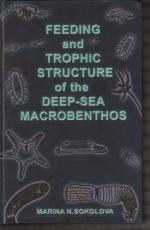|
This section contains 558 words (approx. 2 pages at 300 words per page) |

|
One way of analyzing the biological relationships within an ecosystem is to describe who eats whom within the system, also called a functional analysis. Each feeding level in an ecosystem is called a trophic level. In the grasslands, for example, plants are considered primary producers, forming the first trophic level. The second trophic level consists of primary consumers, such as deer, mice, seed and fruit-eating birds, and other animals, depending completely on the primary producers for their food. Carnivores and predators, such as hawks, are the secondary consumers. Often, the same species may fit into several categories. Bears, for example, are considered both primary and secondary consumers because they feed on plant matter as well as meat. Bacteria and fungi that decompose dead organic matter are called the decomposers. Thus, on the basis of food source and feeding behavior, a complex food chain/web exists within...
|
This section contains 558 words (approx. 2 pages at 300 words per page) |

|


